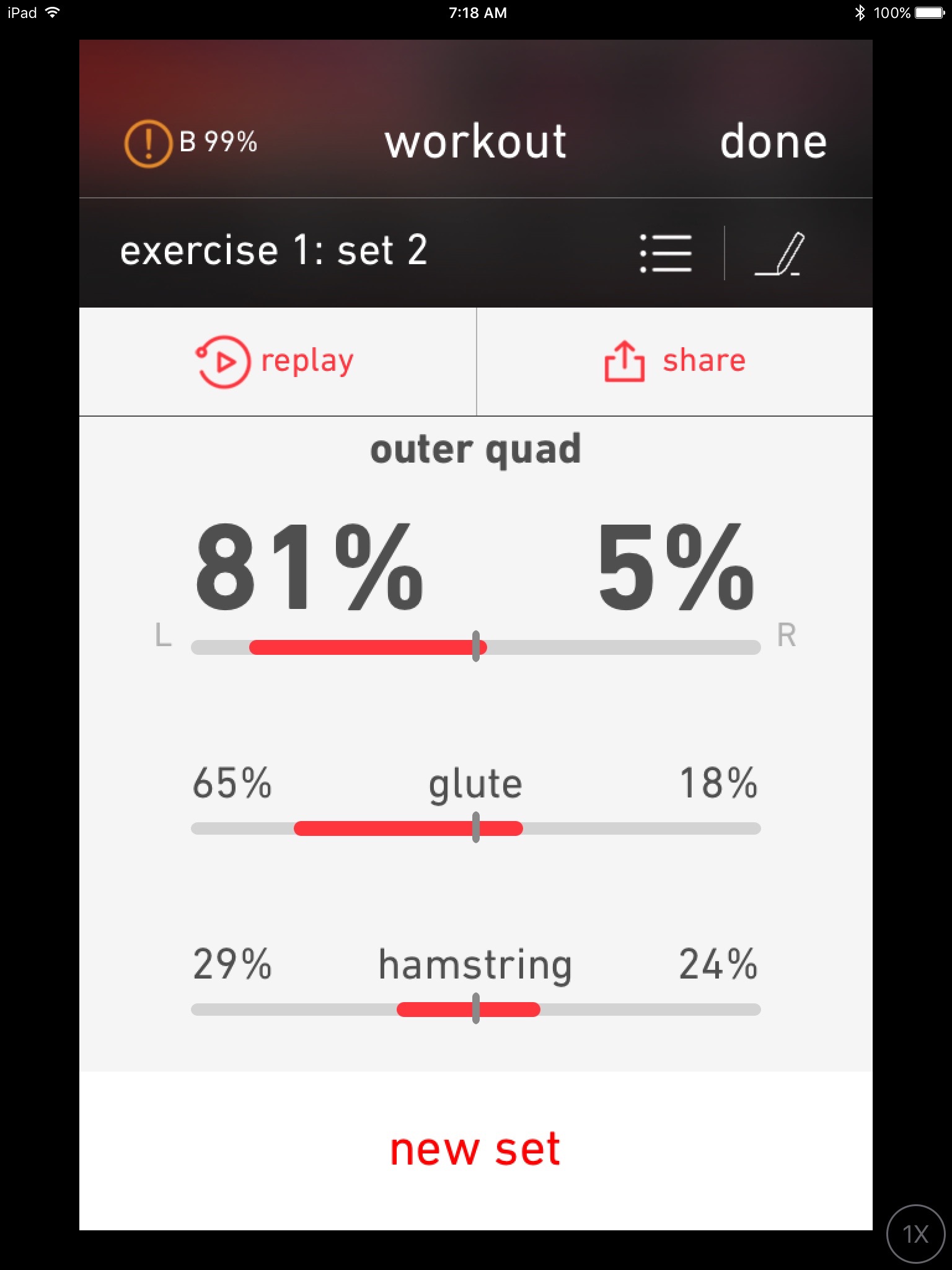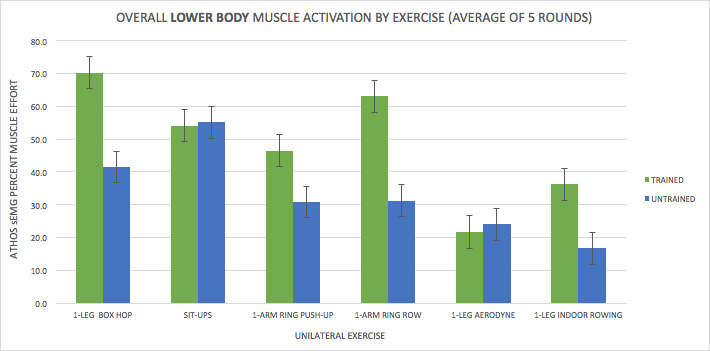By Adam Scott, MS, CSCS
A study from the University of Copenhagen found that just 2 weeks of inactivity in a limb can lead to a 33% loss in strength – a decline which was equated to aging 40-50 years.
The study’s disheartening news didn’t stop there. The researchers also found that the fitter the individual the quicker they lost muscle mass. And if that wasn’t bad enough, according to the study, it also takes about three times as long to recover the lost strength (1,2).
Facing such bleak statistics, it is no wonder why so many athletes attempt to rush back into training. One thing we have always recommended to our athletes is to train around the injury while seeking proper medical treatment (surgery, physical therapy, etc.). Anecdotally we have found this to be an effective way to speed along their recovery.
Recently this approach has led to questions about muscle imbalances and increasing the likelihood of further injuries. Although our personal experiences do not support the concern, we decided to dive into the research and conduct a few small experiments of our own.
So, what happens when someone trains around an injury?
What research says
In traditional academic research, the type of training we are talking about is referred to as “unilateral training” (one-sided training) and there are literally thousands of studies examining its effects.
Going all the way back to 1894 we find the first recorded instance of a phenomenon called “contralateral effects”; also called “cross-education” or “cross-training effects” (4). These three terms refer to findings of untrained limbs increasing in strength during unilateral training (3).
For years contralateral effects were hotly debated. Researchers, unable to explain the mechanisms which created the effects, blamed familiarity with the testing or bad test practices for confounding the results (8).
Recently, scientifically sound studies and a few extensive meta-analyses seem to confirm that contralateral strength gains are real, not just experimental relics (4).
Even more exciting is the fact that contralateral effects don’t seem to be limited to a single muscle group or area. Unilateral training studies have found measurable strength gains in untrained upper limbs, lower limbs, and even the small intrinsic muscles of the hands (5,6,7).
The size of contralateral strength gains varies based on the length and type of training, but a recent meta-analysis of 16 highly regulated studies revealed an average strength gain of about 7-11% in the untrained limb (4). Although this was less than the trained limbed (which averaged 25-52%), it still represents an increase in strength…without direct training!
It is generally accepted that these strength gains are the result of two neurological functions: “spillover” and/or “transfer” since physical changes like hypertrophy or fiber conversion do not accompany the gains (10-12).
Although there is some debate as to where, neurologically, these adaptations take place we did find some reports of mirroring effects in the unused muscles (3,9). Armed with our new Athos EMG (Electromyography) clothing we wondered if we could identify the phenomenon for ourselves.
Note 1: Athos clothing use Surface Electromyography (sEMG) via embedded electrodes to detect electrical activity generated by the muscles.
Now, on to what we found
We tested six common exercises we use with our injured athletes:
-
-
-
- 1-Leg Box Hops
- Weighted Sit-Ups (with 1-Leg immobilized)
- 1-Arm Ring Push-Ups
- 1-Arm Ring Rows
- 1-Leg Aerodyne
- 1-Leg Row
-
-
Each exercise was tested using 5 rounds of 30-second intervals. Data was collected using our EMG clothing. Although the clothing allowed us to compare individual muscle groups, for simplicity, we combined groups into overall lower-body and upper-body “percent muscle effort” scores (PME scores). FIGURE 1 contains an example of the Athos report. For the lower body, we were able to assess muscle activation in the outer quads, glutes, inner quads, and hamstrings. For the upper body we were able to assess activation in the pectorals, lats, trapezius, deltoids, bicep, and tricep.
FIGURE 1: Athos PME Score Example

Combining the individual muscle group data we were able to determine overall upper and lower body activation in the trained and untrained limb. FIGURE 2 shows the lower body activation during five rounds of 1-Leg Box Hops. Across all five rounds, the trained leg averaged an Athos PME score of approximately 70.1 and the untrained leg averaged a PME score of 41.5. Although the trained leg was approximately 40.8% more active, we can clearly see that the untrained leg is still producing sEMG muscle activation.
FIGURE 2: 1-LEG BOX HOPS

FIGURE 3 shows the overall lower-body Athos PME score for all six movements. Again, the biggest takeaway for us is that across the board, we see muscle activation in the untrained limb…for every exercise.
FIGURE 3: OVERALL LOWER BODY MUSCLE ACTIVATION DURING UNILATERAL EXERCISES

Lastly, FIGURE 4 shows the overall upper-body Athos PME score for each movement. As we saw with lower body activation (above), upper-body unilateral pushing and pulling movements also seem to produce effects in the untrained limb.
What was particularly interesting was that in both the aerodyne and rowing trials we see very high activity on the upper-body side of the untrained leg. We believe this is a result of the upper body compensating for the lack of lower body assistance.
Although we didn’t break out the activation by individual muscle group, another thing we noticed was how active antagonist muscles were in the opposite, untrained limb. For example, in the trained limb, during the 1-Arm Ring Push-Up we see high activity in the pectorals and triceps, while in the untrained limb we see proportionally higher activity in the lats and biceps.
FIGURE 4: OVERALL UPPER BODY MUSCLE ACTIVATION DURING UNILATERAL EXERCISES

Bottomline
Based on the available scientific research (and our small, pseudo-study) it seems clear that unilateral training has a positive effect on the untrained limb. Research suggests this effect to be on the order of a 7-11% increase in strength (3,4,6,8,9). Although less than the trained limb, this seems far preferable to the alternative of not training…which costs the athlete 33% of their strength in just two weeks (1,2).
So, if you are recovering from an injury and have the option of training around the trauma – do it! Training one limb helps build strength in both.
References
- (1) University of Copenhagen The Faculty of Health and Medical Sciences. Inactivity reduces people’s muscle strength. ScienceDaily. ScienceDaily, 26 June 2015. <www.sciencedaily.com/releases/2015/06/150626095520.htm>.
- (2) Vigelsoe, A. et al. Six weeks’ aerobic retraining after two weeks’ immobilization restores leg lean mass and aerobic capacity but does not fully rehabilitate leg strength in young and older men. J of Rehabilitation Med, June 2015 DOI: 10.2340/16501977-1961
- (3) Lee, M and Carroll, T. Cross Education: Possible Mechanisms for the Contralateral Effects of Unilateral Resistance Training. Sports Med. 37(1): 1-4, 2007.
- (4) Carroll, T, Herbert, R, Munn, J, Lee, M, and Gandevia, S. Contralateral effects of unilateral strength training: evidence and possible mechanisms. J Appl Physiol 101: 1514-1522, 2006.
- (5) Davies, C, Dooley, P, McDonagh, M, et al. Adaptation of mechanical properties of human to high force training. J Physiol 365: 277-284, 1985.
- (6) Yue, G and Cole, K. Strength Increases from the motor program: comparison of training with maximal voluntary and imagined muscle contractions. J Neurophysiol 67: 1114-1123, 1992.
- (7) Munn, J, Herbert, R and Gandevia, S. Contralateral effects of unilateral resistance training: a meta-analysis. J Appl Physiol 96: 1861-1866, 2004.
- (8) Hinder, M, Carroll, T and Summers J. Transfer of ballistic motor skills between bilateral and unilateral context in younger and older adults: neural adaptations and behavioral implications. J Neurophysiol 109: 2963-2971, 2013.
- (9) Reissing, P, Stockel, T, Garry, M, Summers, J and Hinder, M. Age-specific effects of mirror-muscle activity on cross-limb adaptions under mirror and non-mirror visual feedback conditions. Frontiers in Aging Neuroscience 7(22), 2015.
- (10) Moritani T and DeVeries, H. Neural factors versus hypertrophy in the time course of muscle strength gains. A J Phys Med 53(3): 455-460, 1979.
- (11) Houston, M, Froese E, Valerie S, et al. Muscle performance, morphology and metabolic capacity during strength training and detraining: a one leg model. Eur J Appl Physiol 51: 25-35, 1983.
- (12) Ploutz, P, Tesch P, Biro R, et al. Effect of resistance training on muscle use. J Appl Physiol 76(4): 1675-1681, 1994.
- (13) Mayo Clinic Staff. Tests and Procedures: Electromyography (EMG). http://www.mayoclinic.org/tests-procedures/electroconvulsive-therapy/basics/definition/prc-20014183. Oct 25, 2012. Accessed: Feb 02, 2016.
You Might Also Be Interested in MTI’s Injury/Rehab Plans
